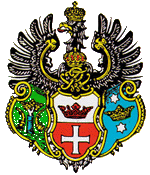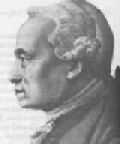![]()
 Koenigsberg's emblem |
Our city
was founded in 1255 and until 1946 was known as Koenigsberg ("King Hill").
On July, 4 1946 the city was renamed to Kaliningrad. Reduced almost to ruins during World War II, the city was rebuilt. Now it has a population over 500,000 ( about 800,000 people in the whole region). The city is situated on the west edge of Russia, on the Baltic sea coast, between Poland and Lithuania. Following the break-up of the USSR, the region became separated from the main Russian territory, but is still part of Russia. |
 |
| It is an industrial, administrative, economic and cultural center of the region. It has large a port, a railway and highway connections. It is famous for amber and fishing. Ninety-five per cent of world's amber resources are found in the region. Also, Kaliningrad is famous for its shipbuilding, plants, machinery, factories, food and fishing industry and furniture factories. It's a city of education with the State University and the State Technical University, the Fishing Industry Academy, two Higher Military schools, Medical school and the world-famous Atlantic Scientific - Research Institute of Fish. There are many German relics, used for different purposes. Here are some of them : |
| It's a
former Luisenkirche. Now it's a Puppet Theater. Every weekend kids from all the town throughout region can see new puppet shows here. |
 |
 |
Formerly
known as the Church of the Holy Family (German), it was constructed in 1907.
It was destroyed during the Second World War and later reconstructed by
Russian volunteers. Now it's the main concert hall. Every day different classical music can be heard within these walls. In 1980, an organ was installed, and now organists all over the world come to give concerts here. |
| One of the most famous places in the city is the Cathedral. It's situated in the center of the town,on the island between two river branches. It was almost destroyed during the World War II, but now it's undergoing reconstructoin and ocassionally being used as the church, concert hall, etc. (on this photo, the building isn't reconstructed yet; I just don't have a recent photo) |  |
 "The law living in us called conscience itself. Conscience is an applying of our actions to this law"  Kant's grave Kant's grave
|
Another
famous place is the Immanuel Kant's Gravesite. It's situated close to Cathedral's
wall. Kant, founder of German classical philosophy, was born and spent almost all his life in Koenigsberg. Here he graduated from the University, then became it's lecturer, and later - professor. Kant gave lectures on philosophy, mathematics, geography, mechanic, logic and other subjects. Kant died at the age of 80 and was buried near the Cathedral's wall. In 1924 a granite sarcophagus with pink porphyry portico, was erected. In has now been more than 20 years since the Kant Museum opened its doors at Kaliningrad's State University. Every 22nd of April, on Kant's birthday, his gravesite is full of flowers. Kant is remembered and honoured in our town. Click here for Kant Links |
![]()
More photos of Kaliningrad and Koenigsberg
Kaliningrad in your pocket - history, communications, where to stay, what to see etc.
![]()
![]() Main
Hall - Our city - Library
- Jukebox
- Road
map
Main
Hall - Our city - Library
- Jukebox
- Road
map ![]()
![]()
This page is under constant construction...